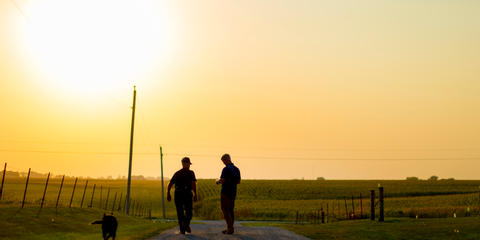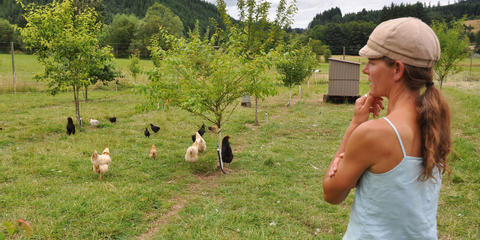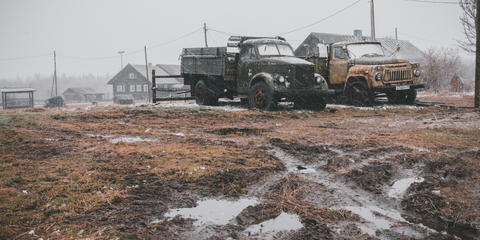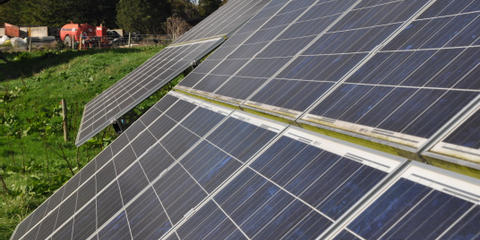Grassland birds are disappearing in the northeastern U.S. This decline is largely due to hayfield mowing during the weeks that birds like Bobolinks are actively nesting. New England's working farmers, in particular, face financial pressures that force them to mow earlier and more frequently. To protect these grassland birds we must develop new strategies for promoting conservation on private farms.
The Bobolink Project uses donated funds to provide financial assistance to participating farmers who modify their mowing schedules so that grassland nesting birds can successfully raise their young. The Bobolink Project is a proven approach that can protect birds and farms.
Eligibility
What criteria are used to select fields for enrollment?
Answering this question revolves around looking at your farm from the standpoint of a Bobolink. Some fields have greater value to nesting grassland birds than others, so the process of selecting potential Bobolink Project fields begins by ranking fields offered by farmers and selecting those which are most biologically suitable for nesting grassland birds. For those farms which meet the following biological criteria, we then look at the financial aspects of the submitted bid
Here are the biological criteria that we look for when evaluating an application.
SIZE
Fields that are 20 acres or more in extent. For thousands of generations grassland birds have nested in large, expansive open areas - and small fields just don't look like home. The bigger, the better. Note that the field size is based on acres of actual grassland; hence, a 20 acre farm that includes 2 acres of row crops plus farm buildings would not be considered as a potential Bobolink Project farm. NOTE: farmers who have been previously accepted into The Bobolink Project with bids of less than 20 acres and who have had Bobolinks on their submitted fields will still be considered.
SHAPE
Fields with shapes that resemble circles or ovals are preferred over fields shaped as rectangles, complex shapes with lots of "edge", or fields that are separated from each other by hedgerows or large roads. Edge habitats (including tree lines that cut into fields) can expose grassland birds to a variety of predators, so grassland birds tend to avoid long and narrow, or convoluted fields. Long and narrow fields, or fields that are convoluted in their shape, will generally not be considered for inclusion in The Bobolink Project, regardless of their acreage.
SURROUNDINGS
Fields that are located in a landscape where there are other nearby fields are preferred over fields that are mostly surrounded by forest or suburban development. Note that the surrounding fields may not necessarily meet the previous 2 criteria (size and shape). While isolated fields (especially large ones) are sometimes occupied by grassland birds, in general fields that occur in landscapes where there are nearby fields are preferred.
Continuing Eligibility Policy for Returning Applicants
Starting in January 2022, any fields that have been enrolled in The Bobolink Project for three previous years, but have not had any grassland nesting birds in those three years, will no longer be eligible for funding through The Bobolink Project.
Additionally, if a field is determined to not have suitable habitat by the biologists who survey the field in the summer, it will no longer be eligible for inclusion in The Bobolink Project.
Terms
Applicants will submit bids for the amount they wish to be paid to leave their fields fallow for Bobolink Habitat. For a full explanation of the bidding process, see this page.
Application Instructions
Complete the application online at this portal.
Resources
Related Programs

Direct Farm Operating Loan
Farm Service Agency
- Loan
- General
- Equipment
- Animal Purchase
- Diversification
- Marketing
- Processing
- Feed
- Seed
- Fertilizer
- Cash Rent
- Housing
- Construction
- Infrastructure
- Repairs
- Pest Management
- Storage
- Legal & Finance
- Water Management
- Waterway Protection
- Water Quality
- Conservation
- Training
- Immigrants
- CSA
- Refinancing
- Reduced Tillage
- National
- Any

Environmental Quality Incentives Program (EQIP)
Natural Resources Conservation Service
- Grant
- Cost Share
- Conservation
- Cover Crops
- Forest Management
- Certified Grassfed
- Irrigation
- High Tunnel
- Certified Organic
- Air Quality
- Alternative Energy
- Soil Health
- Wildlife & Pollinator Habitat
- Water Quality
- Weather
- Research
- Landscape
- Precision Ag
- Drought
- Nutrient Management
- Carbon Capture
- Fencing
- Agroforestry
- Grazing Management
- Reduced Inputs
- National
- Any

Inflation Reduction Act Assistance for Distressed Borrowers
Farm Service Agency
- Grant
- Discount
- Socially Disadvantaged
- Disaster Relief
- National
- Any

Rural Energy for America Program (REAP)
Rural Development · Due Sep 30
- Grant
- Cost Share
- Loan
- Alternative Energy
- Biofuel
- Equipment
- Infrastructure
- Conservation
- Solar Power
- Wind Energy
- Hydro Power
- HVAC
- Lighting
- Irrigation
- National
- Any
Details
Deadline
April 30, 2024
Organization
Financial Instrument
Easement
Updated March 27, 2024
Image Credit: Ning Shi
This information was gathered from public sources. Ambrook is not responsible for or able to affect the results of any financial programs listed, nor are they responsible for any incorrect information that is listed or is on the hyperlinked external sites. All information is subject to change.
Explore hundreds more programs on Ambrook.
